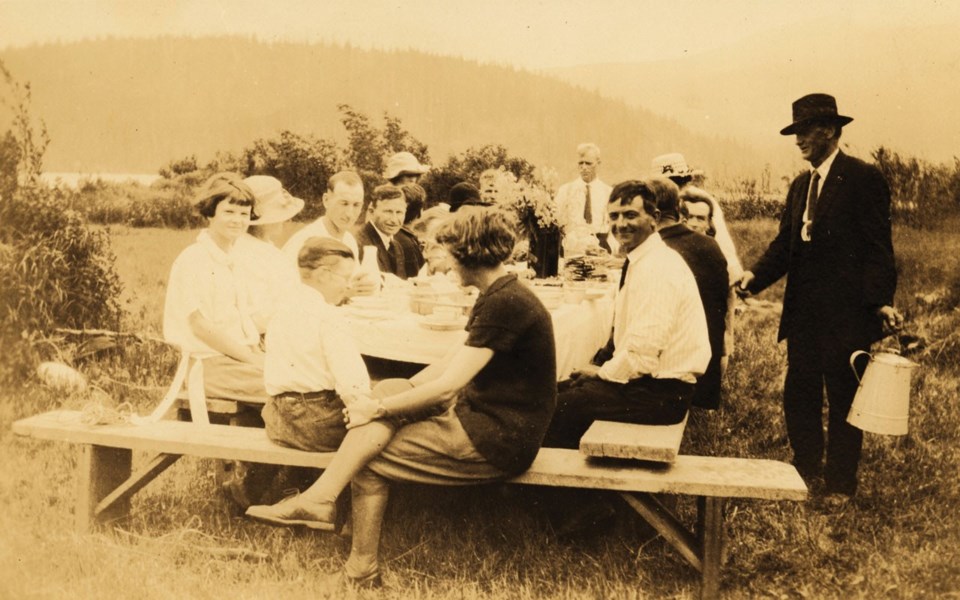Whistler hasn't always been a resort town. In the 1920s and '30s Whistler was still a collection of permanent and part-time residents on the shores of Alta Lake.
In those days, storing and preparing food was a little different than it is today. There were no grocery stores; instead, most food and supplies were brought up on a train from Vancouver that came once every two weeks. Residents depended on this supply train for their meat and other essentials into the 1950s.
Since the deliveries were so infrequent, the food needed to be stored well. Florence Petersen and the others living at Witsend kept their meat and butter fresh in a crock (a hole dug in the ground about one metre deep, lined with planking). This kept the food cool and the bugs out in the hot summer.
Other residents, such as Bill MacDermott, used an icebox to keep meat fresh. Ice was cut from one of the lakes in February and stored year-round in an icehouse, insulated with sawdust.
Eleanor Kitteringham, who lived at Parkhurst with her family, remembered using a sawdust-filled root cellar under the kitchen. "Later on, we got a fridge run by kerosene," she recalled, "It was beautiful."
Families had to be self-sufficient to some extent—in case the train didn't make it—so they also grew what they could and bought local. Trout and salmon could be fished from the lakes and ducks and deer caught in the woods. Most people kept vegetable gardens and picked blackberries and blueberries in the summer.
Phil and Dorothy Tapley owned a farm near Alta Lake with an orchard, cows, chickens and turkeys. As well, Alfred and Daisy Barnfield ran a summer dairy farm and sold milk to the residents, which Alfred and his son Fred delivered in a dugout canoe.
Many prospectors also brewed their own beer. Like most mothers in the area at the time, Eleanor Kitteringham baked her own bread and remembered making 10 loaves every other week. She baked it in a big sawdust-burning stove, which used up as many as eight pails of sawdust a day.
Some creativity and flexibility were often needed to get everyone fed. Bannock, unleavened bread traditional among indigenous people, was a popular food and was adapted so that European flours and cooking tools could be used. A common recipe required only water, flour and lard, which could be mixed together and pan-fried for a quick meal on the trail, providing fats and carbohydrates easily and inexpensively. Both J'Anne Greenwood and Louise Betts Smith, residents of the valley in the 1930s, made a buttermilk chocolate cake with sour milk as one of its ingredients, a good way to get the most out of your milk even if it had curdled. Other recipes worked around the occasional lack of eggs and dairy. Edna Stockdale's Oatmeal Cookies, for example, consisted mainly of margarine, oats and sugar.
Many residents also employed some unconventional cooking methods, such as Alta Lake resident Kokomo Joe. He was known to make a meal of soup and toast with his airtight heater. He would set the soup on top to boil and stick the bread to the heater's sides. You knew the toast was done when it fell off. Dick Fairhurst recalled "A lot of (people) copied him, but we put something on the floor to catch the toast."
Olivia Brocklehurst is the Summer Programs Coordinator at the Whistler Museum. She will be returning to the University of British Columbia in the fall for her second year.




